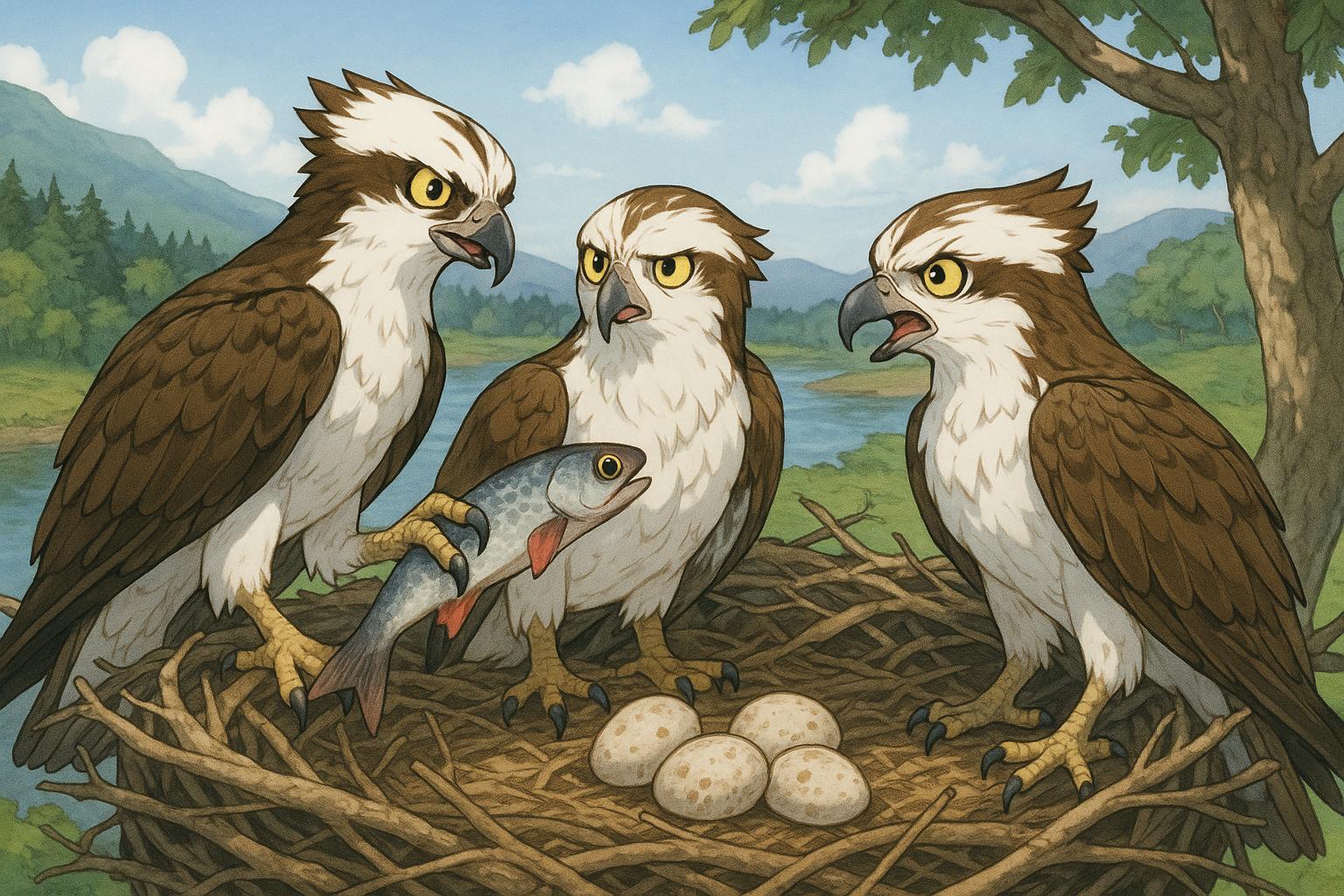A remarkable phenomenon has emerged in the Scottish Borders, where three ospreys—a polygamous trio—have been observed nesting together. Footage released by Forestry and Land Scotland shows the unique dynamics of two female ospreys and a male sharing a nest containing four eggs at Glentress near Peebles. This rare behaviour of cooperative nesting, typically more common among certain other bird species, has captivated ornithologists and birdwatchers alike.
Expert Diane Bennett, a co-ordinator for the Tweed Valley osprey project, highlighted the unusual nature of this arrangement. She noted that while the two females seem to manage incubation duties collaboratively, moments of competition arise, particularly when the male delivers fish. “The only tension witnessed so far has been on the arrival of a fish delivery from the male as the two females both make a grab for it,” Bennett stated. Observers are left intrigued by the hatching of the eggs, as it may further illuminate the operational dynamics of this polygamous relationship.
Osprey relationships, especially those involving multiple partners, are not entirely unprecedented. A similar scenario has unfolded in Stirlingshire, where a single male osprey, dubbed 'Drunkie', has been managing two nests simultaneously—one with his long-time mate Katrine and the other with a new partner named Arklet. This dual nesting created a complex family structure, showcasing the male's role in balancing the needs of both females as they each laid eggs, adding a layer of complexity to his responsibilities.
The dynamics of these relationships reveal not only the flexibility of osprey mating patterns but also the challenges they encounter. In some instances documented around Scotland, fierce competition has arisen between male ospreys vying for territory and affection. For example, observers at a reserve in Caerlaverock have witnessed intense rivalries, as one male attempted to assert dominance over a long-established pair, demonstrating the precarious nature of courtship and nesting attempts in the species.
Interestingly, these multi-partner relationships also evoke stories of heartbreak and rivalry in the osprey world. Recently, concerns were raised regarding 'Lady of the Loch', a 29-year-old female osprey, who has been a mainstay in Perthshire's breeding scene. Following the arrival of a younger female attempting to claim her mate, Laddie, birdwatchers have speculated whether Lady would return for a remarkable 25th breeding season, adding uncertainty to her already celebrated legacy.
The ongoing narratives of competition and collaboration among these striking birds reflect the complexities of wildlife relationships, intertwined with the need for survival. As these observations deepen our understanding of osprey dynamics in Scotland, they also invite a broader conversation about the impact of environmental factors on bird behaviour and the viability of nesting in an ever-changing landscape.
Understanding these relationships is primarily rooted in the behaviour of ospreys, which are known for their strong site fidelity, often returning to the same nesting sites annually. Their nests, typically situated near water, provide both security and food sources, essential for raising their young. The nurturing yet occasionally combative interactions observed in these nests highlight the diverse strategies these birds employ amidst the challenges of their natural habitat.
As the nesting season progresses, the behaviours of these three ospreys at Glentress, along with their counterparts across Scotland, will undoubtedly attract the attention of wildlife enthusiasts eager to witness the outcomes of such unusual arrangements. The delicate balance of cooperation and competition in the avian world continues to unfold, offering a rich tapestry of life that illustrates nature in all its complexities.
Reference Map:
- Paragraph 1 – [1], [2]
- Paragraph 2 – [1], [2], [5]
- Paragraph 3 – [3], [4]
- Paragraph 4 – [5], [6]
- Paragraph 5 – [7]
Source: Noah Wire Services
